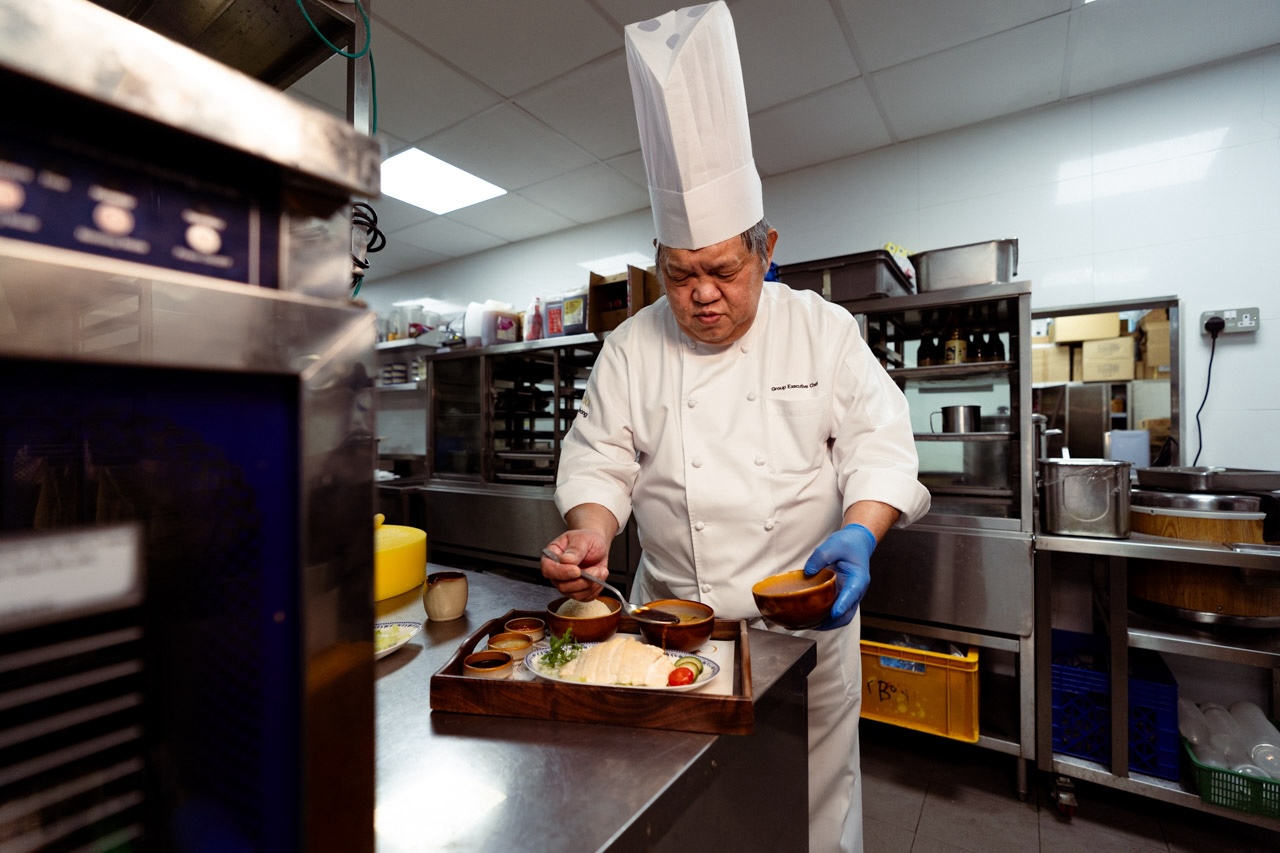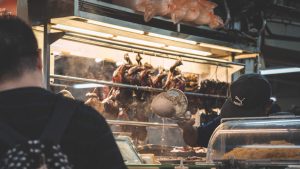All images by Stephanie Lee for RICE Media unless otherwise stated.
Liew Tian Heong has been eating chicken rice daily for 30 years. Many ask if he’s bored of the taste.
“But how can I get bored?” he professes indignantly.
The Executive Chef spends most of his free time tasting chicken rice far and wide just to keep abreast of what’s new and what’s hot. He can even pinpoint where to find his favourites in Hong Kong.
At this point, it’s also because he can’t go a day without chicken rice anymore. When it comes to professional taste-testing, there is constant excitement, novelty, and something new to discover every time.
“I have to go by my judgement, built from experience, to taste and see the difference. Most importantly, you must have a passion for cooking and honing your craft.”
The head of the Chatterbox kitchen maintains an imposing silhouette at the age of 62. He watches every part of the cooking process with a sharp gaze and an even sharper tongue, ensuring their signature Mandarin Chicken Rice doesn’t stray from Chatterbox’s traditional taste and flavour.
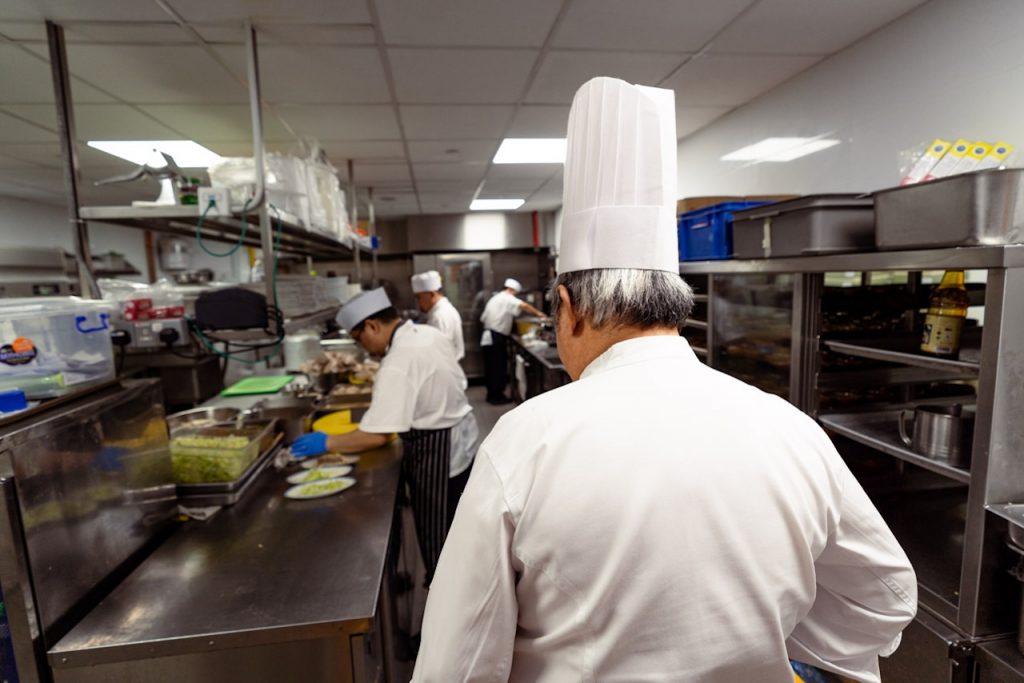
This fiercely guarded recipe is only fully known by a small group of specialists. Chef Liew reveals that their time-honoured taste has stayed unyielding over the decades because they rarely change the chefs who cook chicken rice in their kitchen.
Two of the chicken rice specialists in Chef Liew’s kitchen share a century of experience between them. They’re both over the age of 70 and have been the hands behind Chatterbox’s unchanging chicken rice recipe since 1971.
I pose this maestro a divisive question known to all Singaporeans: Which is more important? The chicken or the rice?
He doesn’t hesitate.
“Of course the rice lah.”
Winner Winner, Which Chicken Is For Dinner?
But Chef Liew still has to ensure that the chicken doesn’t play second fiddle. After all, people pay to eat both chicken and rice.
We watch him chop chicken into even slivers. His cleaver easily cuts through the tender meat, and the thud of metal against wood sounds almost rhythmic. Each slice reveals soft white meat flowing with juices.
It’s a visual spectacle for us. For him, it’s a regular Thursday afternoon.
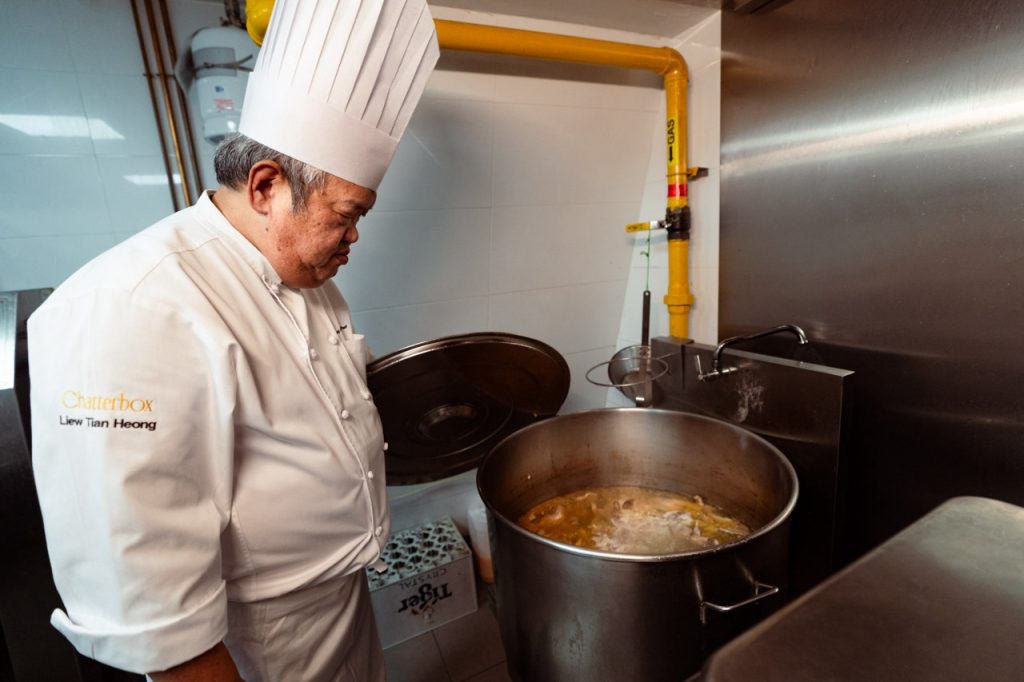
This result is not without thought and consideration.
Chatterbox uses carefully selected free-range chickens from Malaysia, which are at least 60 days old and weigh around 2kg. This ensures high-quality chicken rice by balancing meat yield and taste.
Older chickens have more flavourful and firmer meat but can become too tough if they age too much. Free-range means that their increased activities and varied natural diets build more succulent meat with better texture.
These chickens are at the perfect age and weight for an ideal meat and fat ratio, but what makes this breed particularly special is its natural low fat percentage.
“Our chickens aren’t very fatty, so we don’t dunk them into ice water. The ice water is what creates the jelly-like layer of congealed fat under the chicken skin.” This additional step was influenced by Cantonese cooking methods as the dish grew popular in the ‘60s.
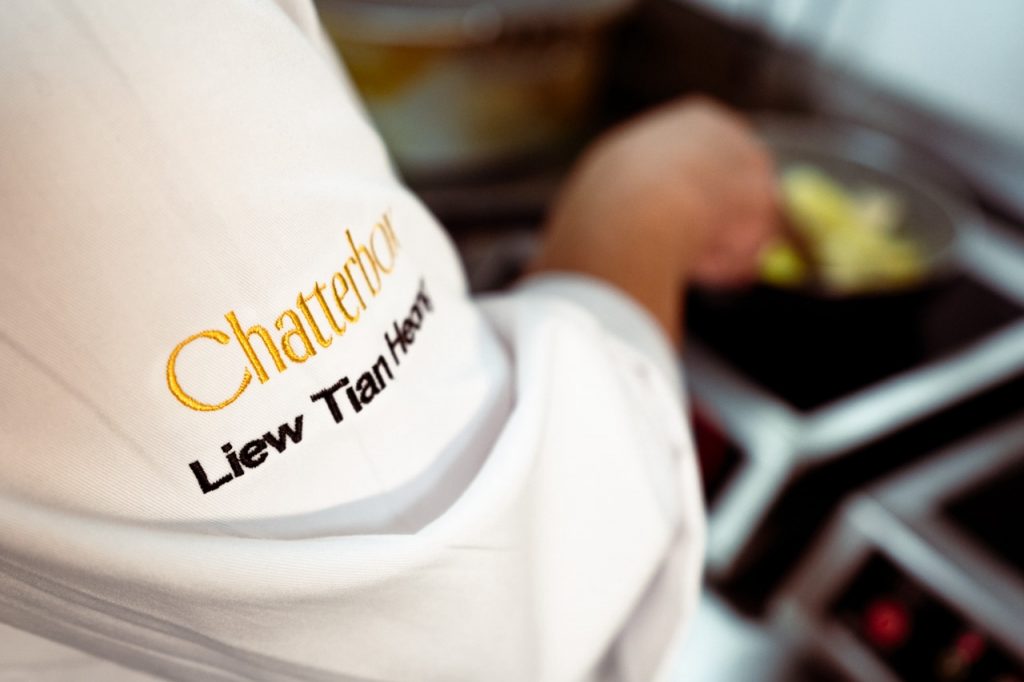
“We also choose to steam our chicken instead so that it doesn’t lose its flavour,” Chef Liew adds.
This is a radical shift from the traditional method derived from the original iteration of the dish, the Wenchang chicken, which would most commonly be boiled and then poached.
But the differences don’t end there. The recipe started as the Wenchang chicken because it was cooked specifically with a local breed of chicken in Hainan. But when Hainanese immigrants started cooking it here in Singapore, it was their frugal attempt to make full use of the resources they had.
“They used old hens and just boiled everything together. It was a meal just to fill the stomach,” explained Chef Liew.
Today, old hens are only used to infuse extra flavour into the broth, an original Hainanese practice that Chef Liew still adopts today.
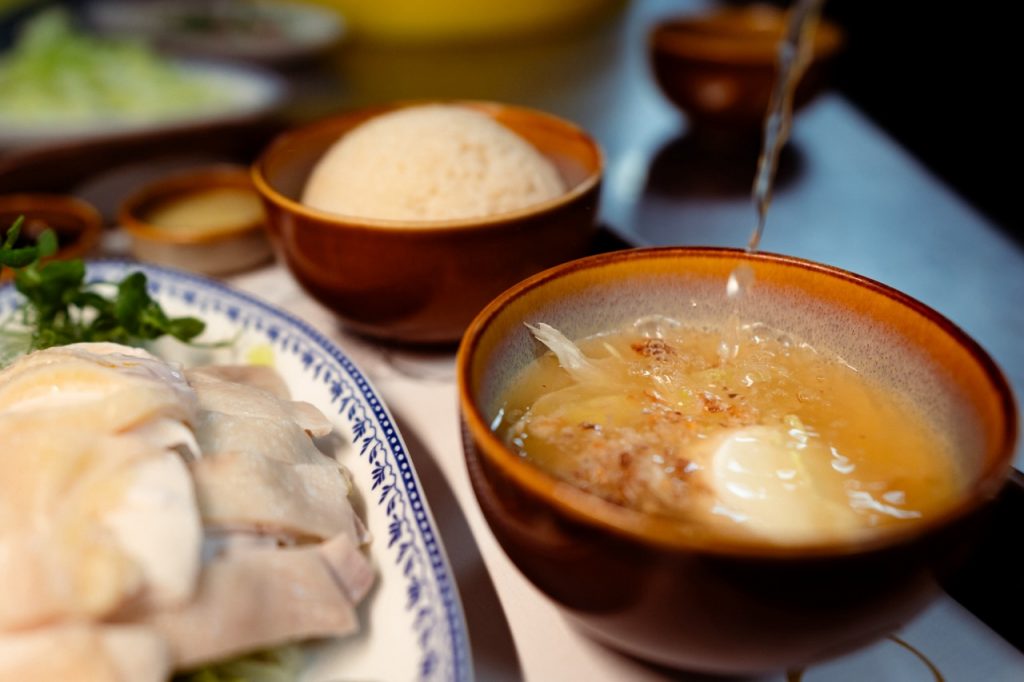
The Wenchang chicken was also always served with bones and all. Boneless chicken rice only appeared in the 1970s when the late Mr Kiang Joon Toh, better known as Sergeant Kiang amongst his customers, was tasked to cater the dish for Chatterbox’s mainly Western and Japanese guests.
A legend was created. We, as a country, haven’t looked back since.
A Fragrance Just Like Perfume
But in chicken rice, the rice component often outshines the chicken.
“I’ve seen a customer come in—a young boy—who started eating only the rice the moment it was served. He looked like he forgot the chicken was even there,” Chef Liew laughs.
“You can get chicken from anywhere, but rice is the hardest to cook. It’s hard to get the right texture.”
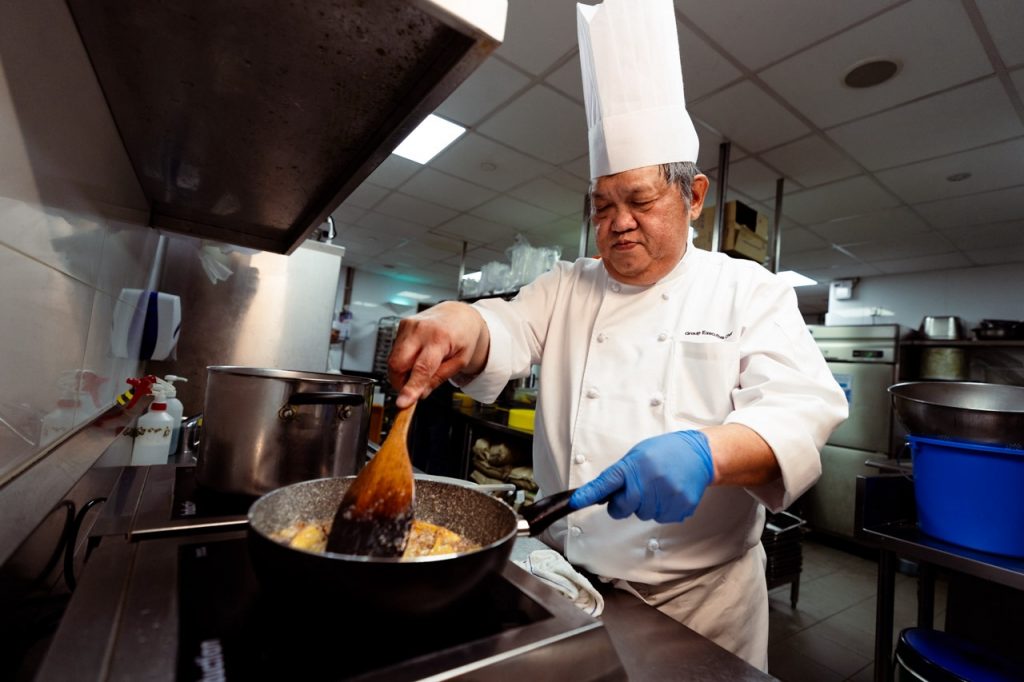
He compares the likeliness of the rice’s fragrance to perfume. In the same way that a loaf of good bread is told apart by its symphony of crackle in Ratatouille, Chef Liew shares that good chicken rice is recognised by its aroma.
“When you first get your chicken rice, the first thing you smell isn’t the chicken but the fragrance of the rice.”
The secret lies in the addition of flavoured chicken oil, derived from rendering chicken fat over low heat for about an hour. This is then sauteed with aromatics and spices to add fragrance and added to the rice before it is cooked.
In addition to the garlic and ginger the Hainanese used to flavour their rice back then, our modern recipe has a regional touch by including lemongrass and pandan leaves into the mix.
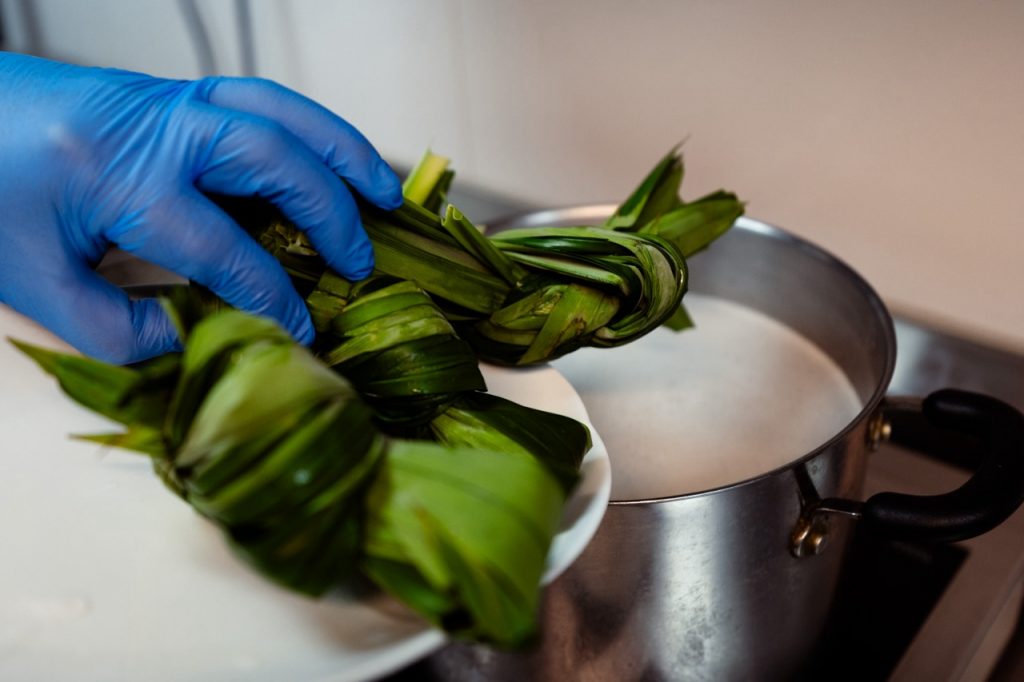
Chef Liew watches two stoves simultaneously—one for sauteing, the other for boiling. With no timer in sight, he seems to have an intuition for when is the right time to add each ingredient, expertly manoeuvring the spatula with one hand, the panhandle in the other.
His experience shines in his relaxed mannerisms; he speaks to us casually while making jokes. There is no hesitation in his movements as he stirs the pan like he has done thousands of times before. He could probably do it in his sleep, backwards even.
When we ask if he is revealing too much of their recipe, Chef Liew takes the question in stride.
“You may know the ingredients, but you don’t know the timing, or how much of each to add. If it was so easy, anybody could have stolen our recipe by now,” he laughs, still keeping an eye on the fire.
Chef Liew invites us to take a closer whiff of his readied oil, but it isn’t necessary. The familiar aromatic smell permeates the entire kitchen. The nutty and savoury notes from the garlic, pandan and shallots are hearty, complementing the more citrusy and earthy smells of lemongrass and ginger.
This blend of flavours would then be infused into the aged Thai jasmine rice and slow-cooked in chicken stock.

Having tasted it myself, it’s clear that each ingredient comes through in the rice’s fragrance. I can almost taste the ginger and garlic.
But the rice’s speciality comes from its texture. Although it was soft, the grains weren’t sticky and were easy to scoop with every spoon, almost like sand.
While the chicken is excellent on its own, piling everything together in a spoon—sauces and all—created a wholesome feel in my mouth. The warm and earthy rice grounds the sharper flavours of the salty chicken and the extra zesty zing of chilli.
I could eat this forever. The best part? Their hefty serving sizes.
Please Judge This Book by Its Cover
This proportion is, of course, by no means a coincidence. Chatterbox serves a generous amount of chicken, but everything is perfectly portioned and served on a tray.
Cooking is just half of it. Plating, choice of sauce, and presentation have evolved alongside this traditional dish, making it the familiar chicken rice that we know today.

Chatterbox’s iconic chicken rice, for example, is always served with the same three sauces: chilli, ginger and dark soy sauce, as influenced by local tastes and ingredients.
This varies greatly from the Wenchang version, which, according to food blogger Tony Boey, is often eaten with a dip made with “diced garlic, parsley (cilantro), and sugar held together with chicken stock, rendered chicken fat and optional light soy sauce.” Calamansi juice is also added after blending everything.
Of course, there was also no luxury of presentation back then. As the pioneers of bringing authentic hawker food into the comforts of a 5-star hotel, Chatterbox was the first to introduce the idea of arranging everything on a tray.
While its original intention was for easy carrying, it is also widely believed to have influenced the shift of chicken rice from being a sharing dish to a meal for one. And now, its presentation has become an integral part of Chatterbox’s signature dish.
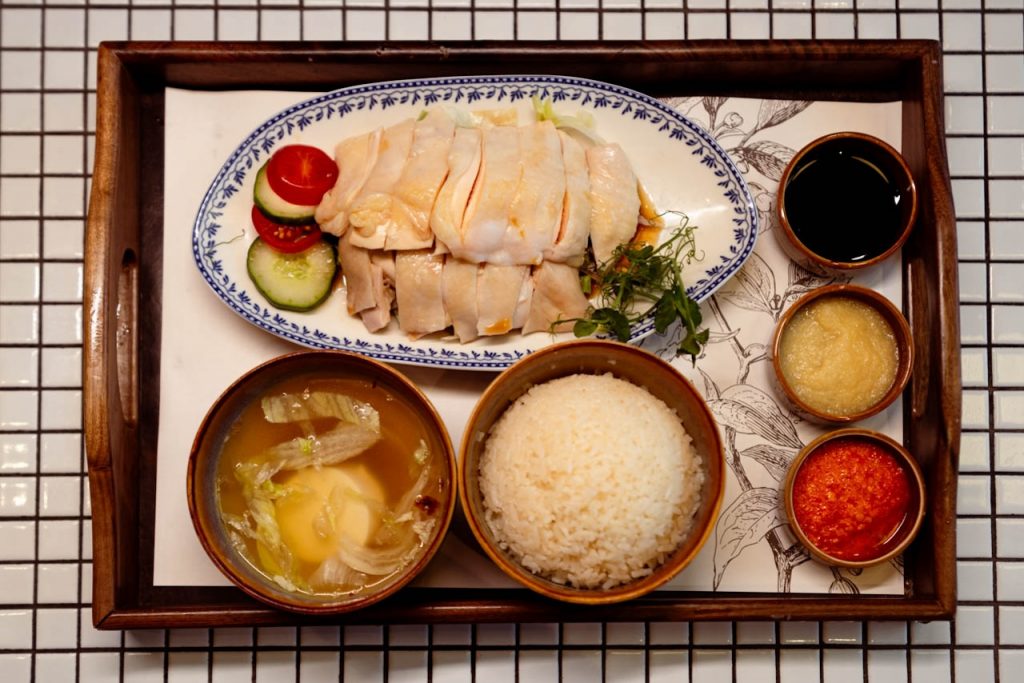
The presentation is simply one part of its unique dining experience. Chatterbox is one of the few places where patrons wouldn’t think twice about pairing a glass of wine with their chicken rice. While unconventional, the additional palate of a light red or white could stand to either enhance or balance and cut through the rich and savoury flavours of chicken rice.
As we take photos of the finished dish, Chef Liew informs us that there is a correct orientation. The intricate line art of a flower on the paper placemat in the tray aligns with the diner’s right side. In the tray, the chicken is neatly placed in traditional china.
Before he gets ready to serve, he wipes down the sides for drips and fiddles with the tomatoes and cucumber to ensure they’re in place. Only then does he proudly announce: “OK, go ahead”.
It’s a strict standard to uphold. Chef Liew promises that the tradition of chicken rice, be it its recipe or its presentation, will continue to be upheld even in their overseas branches for as long as he is here.
“Even when I’m not here, I have to make sure that everything is still done according to procedure,” he asserts.
The same presentation guidelines apply to the overseas branches in Hong Kong and Japan that Chef Liew manages. They are meticulous (even about replicating the type of china used to serve) about being as similar as possible to the ones from the Singapore kitchen.
I ask Chef Liew why this consistency is so important. He simply says that it represents the restaurant’s stand for authenticity—that despite the refurbishments and constant evolution as a brand, the taste they offer remains the familiar, comforting flavour that regulars love.

A Familiar Taste
Chef Liew does not intend to please everyone, surprisingly. But that’s because he knows that everyone has intricate, personal preferences for the chicken rice they like. What he wants is to continue cooking for those who like it the Chatterbox way—the way he’s done it for the past three decades.
“Some customers come in four times a week. If they like it, they will keep coming back and won’t get bored.”
Just like him.
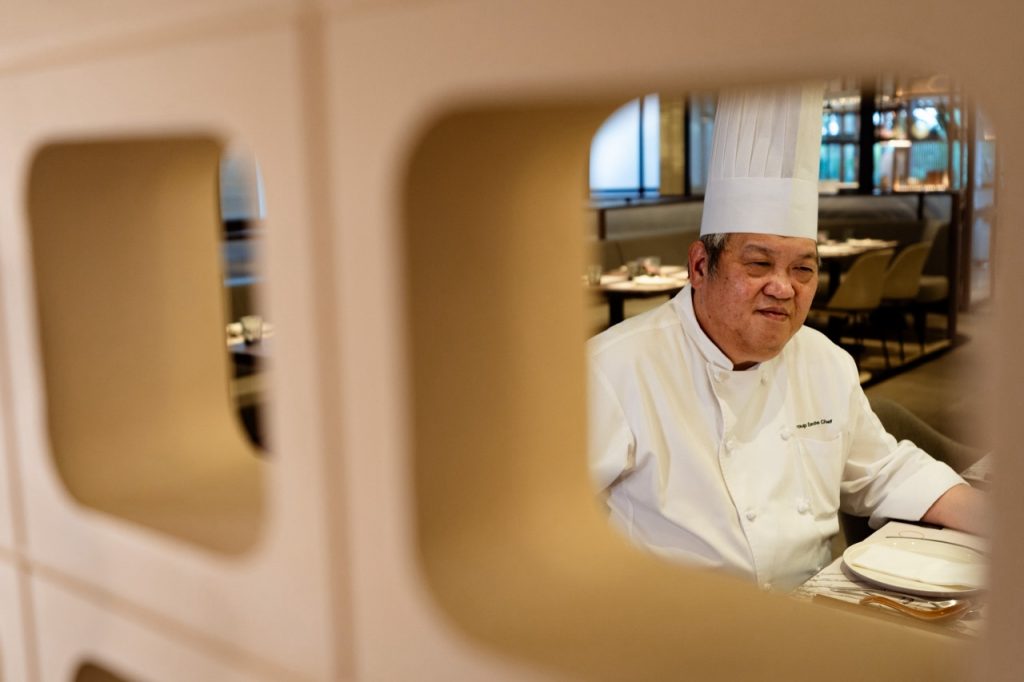
Chef Liew’s enthusiasm as he speaks about his craft shows that his passion is far from running out of steam. Having been part of the team for so long, he reflects how lucky he is to have staff on board who love doing what they do. He’s proud of what he does and what previous generations at Chatterbox have done for chicken rice, its heritage and its standing in Singapore.
While chicken rice as a recipe has changed and adapted over the years, what hasn’t changed is its symbolism for us as Singaporeans. No matter in what shape or form, it’s the dish that triggers the swell in our chest upon seeing ‘Singapore Chicken Rice’ listed on a menu while overseas.
It’s comfort food that we’ve eaten since we were young and will continue to eat because what is a food court without at least one chicken rice stall? And Chef Liew is glad that his food can bring us this joy.
“Chicken rice is so prominent because it’s part of our childhood,” he says.
“When they were young, fathers would bring their sons to eat chicken rice at the hawker centre. Now, sons will bring their fathers and grandfathers here to eat chicken rice.”

